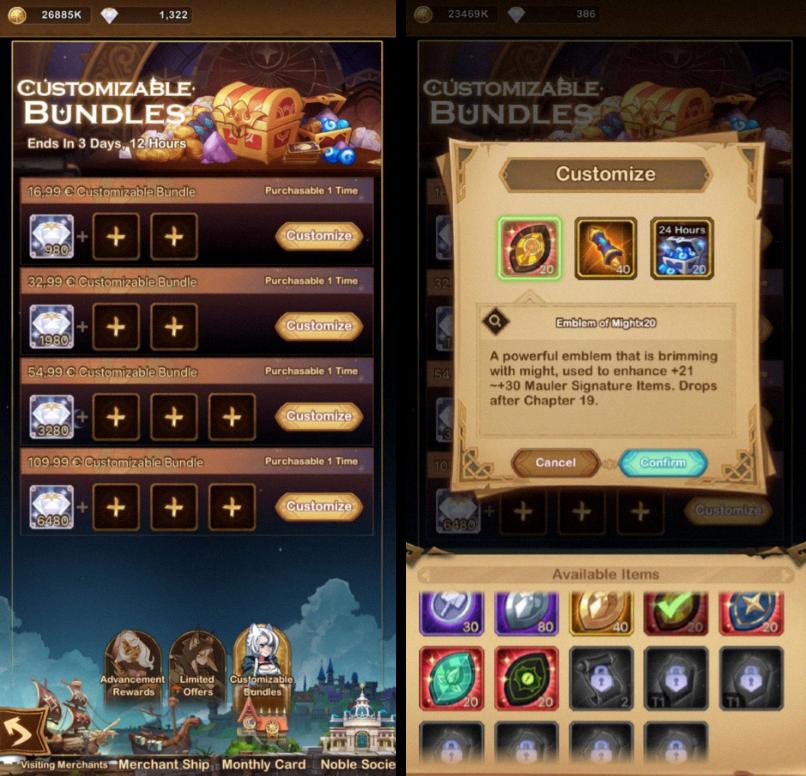In-app purchases (IAP) have revolutionized the gaming industry, allowing players to enhance their gaming experience by purchasing additional content or services within the game itself. This article will delve into the world of IAP in games, exploring its impact and benefits for both game developers and players.
IAP offers a wide range of opportunities for game developers to monetize their creations. With IAP, developers can sell various virtual goods, such as special abilities, characters, levels, or virtual currencies, directly to players. This not only allows developers to generate revenue but also provides players with the option to personalize and enhance their gameplay.
One of the significant advantages of IAP is its ability to create a sustainable revenue stream for game developers. Unlike traditional pay-to-play models, where players pay a fixed price upfront, IAP allows developers to offer their games for free or at a lower cost, attracting a broader audience. Once players are engaged with the game, they have the option to make in-app purchases to unlock additional features or progress faster. This model encourages players to invest in the game over time, resulting in a steady income for developers.
Moreover, IAP provides a win-win situation for both developers and players. Players can choose to make purchases based on their preferences and gaming needs, ensuring a customized experience. They can unlock exclusive content, gain advantages, or simply support the developers they enjoy. On the other hand, developers can continually update and improve their games, providing fresh content and a rewarding experience for players.
IAP also fosters player engagement and retention. By offering in-game purchases, developers can provide ongoing incentives for players to stay connected with the game. This can be through limited-time offers, exclusive items, or special events. As players invest time and money into the game, they become more committed to its success, fostering a sense of loyalty and community.
To implement IAP effectively, developers often integrate their games with leading app stores, such as Apple’s App Store or Google Play Store. These platforms provide a secure and streamlined process for players to make purchases, ensuring a smooth user experience. Additionally, developers can leverage Unity In-App Purchase (IAP), a powerful tool that simplifies the integration of IAP across multiple app stores, maximizing revenue potential.
By combining IAP with Unity Analytics and Economy, developers can gain valuable insights into player behavior and preferences. This data allows them to make informed decisions regarding pricing, content updates, and marketing strategies, ultimately optimizing their monetization efforts.
In-app purchases have revolutionized the gaming industry, providing game developers with a sustainable revenue model and players with a personalized and enhanced gaming experience. As the gaming landscape continues to evolve, the integration of IAP is becoming increasingly essential for developers seeking to engage players and generate revenue.
What is IAP in Game Development?
In game development, IAP stands for in-app purchases. It refers to the feature within a mobile game where users can buy various items or services using real money. These purchases are made directly from within the game itself, eliminating the need to exit the game and visit an external website or store.
IAPs can include a wide range of items, such as virtual currency, power-ups, extra lives, new characters or levels, cosmetic upgrades, and more. These purchases enhance the gameplay experience and often provide players with an advantage or additional content.
Here are some key points about IAPs in game development:
1. Convenience: In-app purchases offer a convenient way for players to enhance their gaming experience without leaving the game. Users can easily browse and make purchases within the app itself.
2. Monetization: For game developers, IAPs are a significant source of revenue. By offering attractive and desirable items or services, developers can generate income from players who are willing to spend real money to enhance their gameplay.
3. Freemium Model: Many games adopt a freemium model, where the game is initially free to download and play, but offers optional IAPs to unlock additional features or progress faster. This model allows developers to reach a larger audience while still monetizing their game effectively.
4. Microtransactions: IAPs often involve microtransactions, which are small purchases made within the game. These transactions are usually low in cost, making it more enticing for players to make multiple purchases over time.
5. App Store Integration: IAPs are typically facilitated through app stores like Apple’s App Store or Google Play Store. These platforms provide a secure and standardized system for handling transactions and managing purchases.
6. Player Engagement: Well-designed IAPs can encourage player engagement by offering valuable and meaningful rewards. This can lead to increased player retention and satisfaction, as players feel they are getting value for their money.
7. Balancing In-Game Economy: Game developers need to carefully balance the in-game economy when implementing IAPs. It is crucial to ensure that purchases do not create an unfair advantage or disrupt the overall gameplay experience for non-paying players.
IAPs in game development refer to the ability for players to make purchases within a mobile game using real money. These purchases enhance gameplay, generate revenue for developers, and offer a convenient way for players to enhance their gaming experience.

What is In-app Purchase in-Game?
In-app purchase in a game refers to the ability to buy additional content, features, or virtual items within the game itself. It allows players to enhance their gaming experience by acquiring items or upgrades that are not available through the regular gameplay.
Here are some key points regarding in-app purchases in games:
1. Definition: In-app purchases are transactions made within a game app, where players can spend real or virtual currency to obtain virtual goods or services.
2. Types of purchases: In games, in-app purchases can include various items such as weapons, power-ups, character customization options, extra levels or game modes, virtual currency, energy refills, and more.
3. Enhancing gameplay: In-app purchases often provide advantages or enhancements that can help players progress faster or enjoy a more diverse gaming experience. For example, purchasing a powerful weapon or unlocking special abilities can give players an edge in battles.
4. Monetization strategy: In-app purchases are a common monetization strategy for game developers. By offering additional content for sale, they can generate revenue beyond the initial purchase of the game.
5. Payment methods: In-app purchases can be made using real currency, such as credit cards or mobile payment systems, or through virtual currencies that players earn or purchase within the game.
6. Safety considerations: It’s important for players to exercise caution when making in-app purchases. Parents should monitor and control their children’s spending to avoid unauthorized purchases. It’s also advisable to ensure the app store account is protected with a secure password.
7. Transparency: Game developers are encouraged to provide clear information about the cost and nature of in-app purchases, including any recurring charges or subscription models. This allows players to make informed decisions before making a purchase.
8. Regulations: In some regions, there are regulations in place to protect consumers from unfair practices related to in-app purchases, particularly when it comes to children. App stores may also have guidelines and policies in place for developers to follow.
By offering in-app purchases, game developers can provide additional value to players while generating revenue to support ongoing development and maintenance of the game.
What is IAP in Unity?
IAP stands for In-App Purchase, and in the context of Unity, it refers to a feature that allows developers to set up and manage in-app purchases within their games or applications. In simpler terms, it enables users to make purchases of virtual items or extra content directly from within the app.
Unity’s IAP system provides a streamlined solution for implementing in-app purchases across various app stores, including iOS, Android, and others. By integrating IAP into your Unity project, you can easily offer additional features, virtual currencies, subscriptions, or other items that can enhance the user experience and generate revenue.
With Unity IAP, you can take advantage of features such as product catalogs, real-time validation of purchases, receipt verification, and cross-platform compatibility. This allows you to efficiently manage your in-app purchases and ensures a smooth and secure purchasing experience for your users.
By pairing Unity IAP with Unity Analytics and Unity Economy, you can gain valuable insights into user behavior and purchasing patterns, which can help you optimize your monetization strategy and maximize your game revenue. Additionally, Unity IAP supports various pricing models, including one-time purchases, consumable items, non-consumable items, and subscriptions, giving you flexibility in how you monetize your game.
Unity IAP is a powerful tool that allows developers to implement in-app purchases in their Unity projects, enabling users to buy virtual items or extra content directly from within the app. It offers features for managing purchases, validating receipts, and integrating with app stores, ultimately helping developers optimize their monetization strategy and generate revenue.
Conclusion
In-app purchases (IAP) have become a significant revenue stream in the gaming industry. With the ability to buy additional content or services within a game, players can enhance their gaming experience and developers can monetize their games effectively.
IAPs offer a variety of options for players, such as purchasing power-ups, unlocking new levels or characters, and obtaining in-game currency. These purchases provide a sense of progression and personalization, keeping players engaged and invested in the game.
From a developer’s perspective, IAPs provide a lucrative opportunity to generate revenue. By offering enticing and valuable content, developers can tap into players’ desire for a more immersive and enjoyable gaming experience. This can lead to increased player engagement, positive word-of-mouth, and ultimately, higher profits.
To successfully implement IAPs, developers must carefully consider their pricing strategies, ensuring that the costs align with the perceived value of the content. It is crucial to strike a balance between providing desirable content and avoiding a pay-to-win scenario, where players feel compelled to spend money to progress in the game.
Furthermore, integrating IAPs seamlessly within the game’s user interface and providing clear, transparent information about the purchases can enhance the overall user experience. This builds trust and encourages players to make more purchases.
The success of IAPs in games is further enhanced by combining them with data analytics. By leveraging insights from player behavior and preferences, developers can refine their offerings, tailor promotions, and optimize pricing strategies. This data-driven approach maximizes revenue potential while providing a personalized experience for players.
In-app purchases have revolutionized the gaming industry by providing a win-win situation for both players and developers. Players can enhance their gaming experience with additional content, while developers can generate revenue and sustain their game’s success. With careful implementation and data-driven strategies, in-app purchases have become an essential component of modern game monetization.








